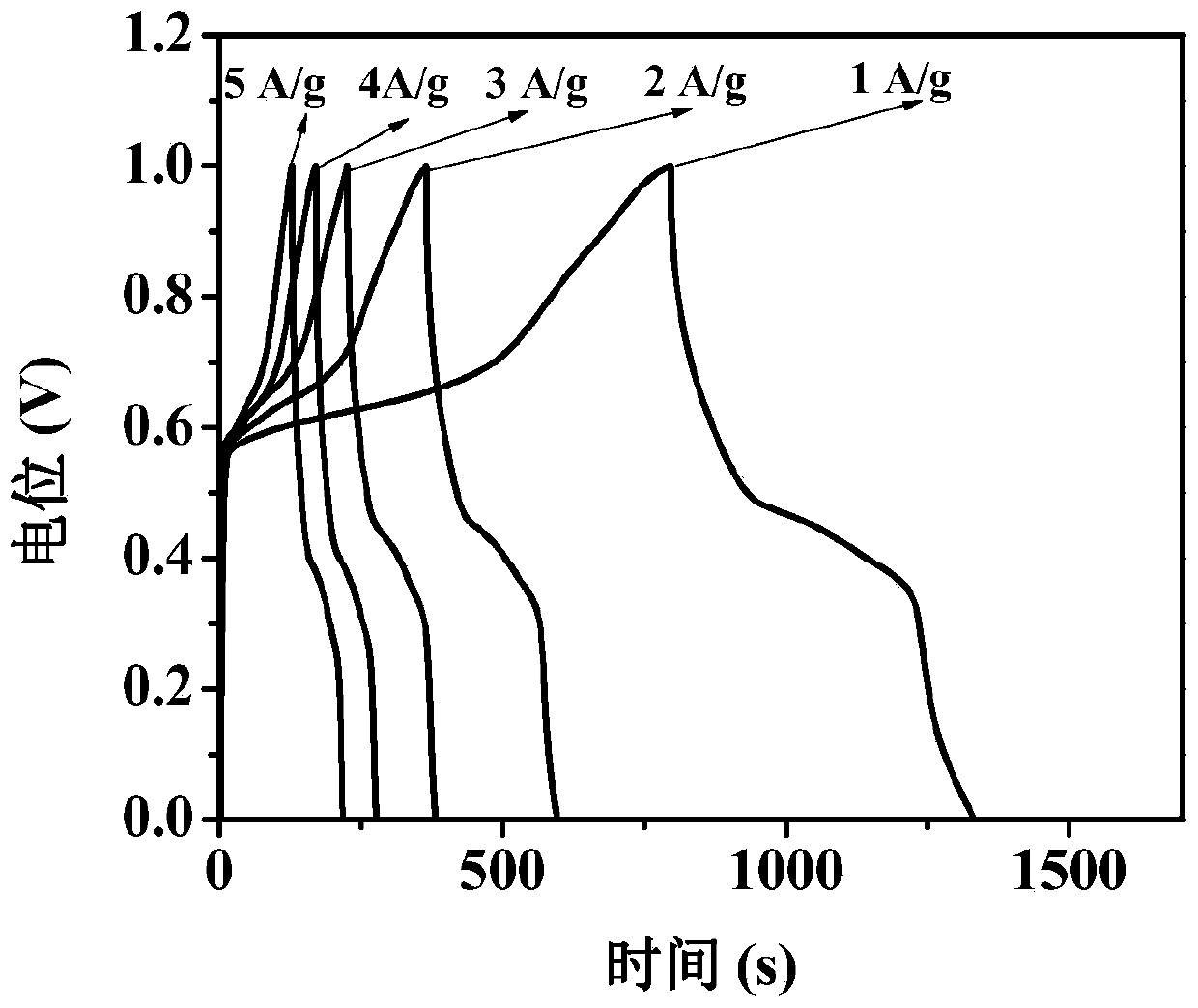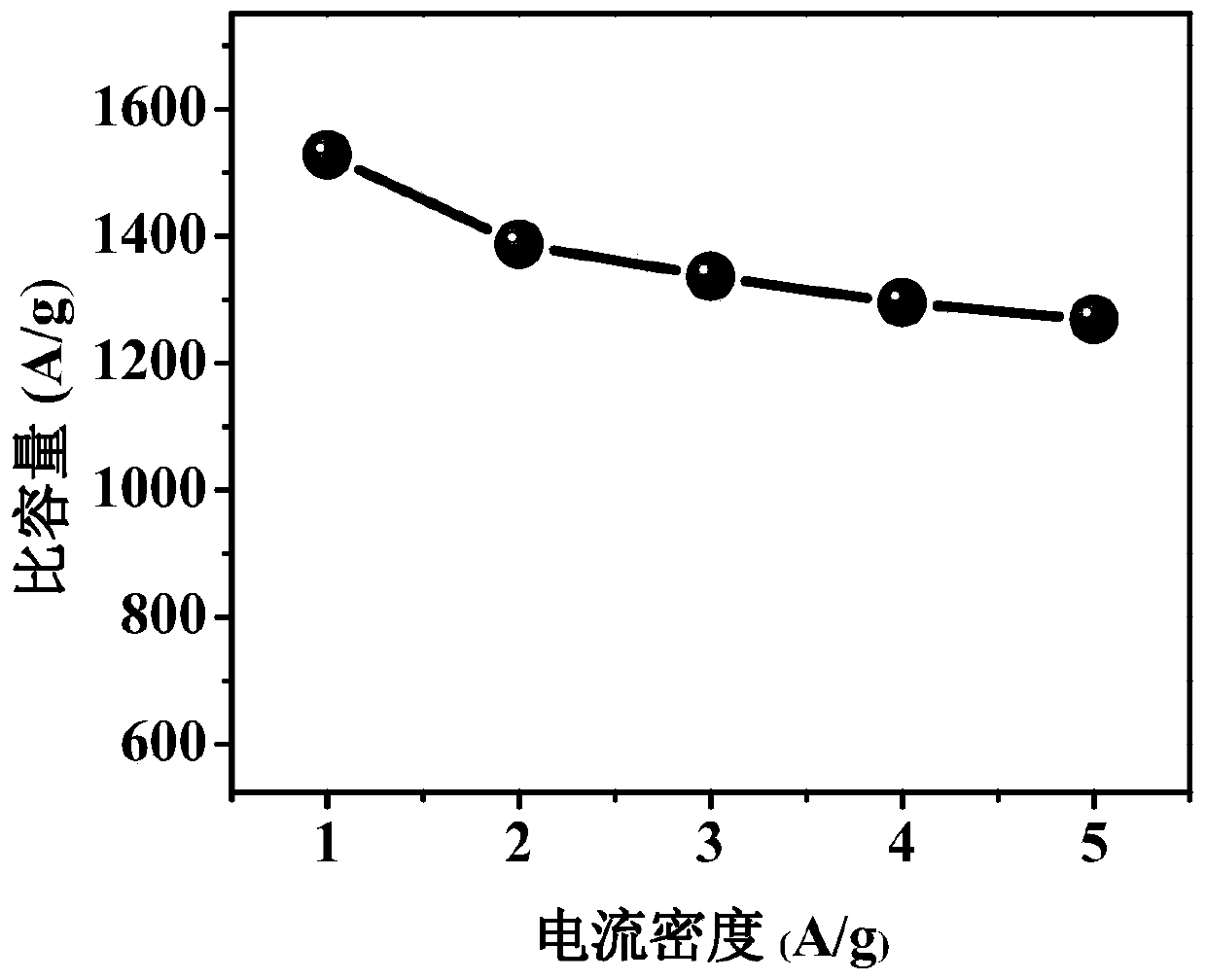Preparation method and application of nickel sulfide/graphene composite material
A composite material and graphene technology, applied in the field of electrochemical materials, can solve the problems of poor rate capability and cycle stability, unsatisfactory interaction of components, and low utilization rate of specific surface area, so as to achieve a simple and easy process and easy industrialized mass production. , shape controllable effect
- Summary
- Abstract
- Description
- Claims
- Application Information
AI Technical Summary
Problems solved by technology
Method used
Image
Examples
Embodiment 1
[0031] 1) Expand the expanded graphite with an expansion rate of 1000 at 900°C to obtain graphite worms, then mix the graphite worms in deionized water at a mass ratio of 10:90, and perform high-speed shearing at a speed of 2200rpm for preliminary exfoliation. Shearing time is 50min. Then, the homogeneous exfoliation was carried out by a high-pressure homogenizer with a pressure setting of 800 bar, and the homogenization time was 60 minutes to obtain a graphene slurry. Put the graphene slurry into a freeze drier for 4 hours and freeze it at -45°C, then vacuum-dry it for 48 hours to obtain graphene powder;
[0032] 2) Dissolve nickel chloride hexahydrate in deionized water to form a solution with a concentration of 0.05 mol / L, add 0.1 mol / L of the graphene powder in step 1), and stir for 20 min at a rotational speed of 800 rpm. Then add 0.3mol / L thiourea to the above dispersion, and continue to stir at 800rpm for 20min until uniform;
[0033] 3) Put the mixed liquid in step 2...
Embodiment 2
[0036] 1) Expand graphite with an expansion rate of 300 at 1200°C to obtain graphite worms, then mix the graphite worms in deionized water at a mass ratio of 1:99, and perform high-speed shearing at a speed of 1200rpm for preliminary exfoliation. The cutting time is 40min. Then, the homogeneous exfoliation was carried out by a high-pressure homogenizer with a pressure setting of 400 bar, and the homogenization time was 30 minutes to obtain a graphene slurry. Put the graphene slurry in a freeze dryer for 6 hours and freeze it at -42°C, then vacuum-dry it for 72 hours to obtain graphene powder;
[0037] 2) Dissolve nickel chloride hexahydrate in deionized water to form a solution with a concentration of 0.1 mol / L, add 0.1 mol / L graphene powder in step 1), and stir for 20 min at a rotational speed of 800 rpm. Then add 0.2mol / L thiourea to the above dispersion, and continue to stir at 800rpm for 20min until uniform;
[0038]3) Put the mixed liquid in step 2) into the polytetrafl...
Embodiment 3
[0041] 1) Expand graphite with an expansion rate of 1500 at a high temperature of 800°C to obtain graphite worms, then mix the graphite worms in deionized water at a mass ratio of 20:50, and perform high-speed shearing at a speed of 2500rpm for preliminary exfoliation. The shearing time is 120min. Then, the homogeneous exfoliation was carried out by a high-pressure homogenizer with a pressure setting of 1600 bar, and the homogenization time was 80 minutes to obtain a graphene slurry. Put the graphene slurry into a freeze dryer and freeze for 3 hours at a temperature of -46°C, then vacuum-dry for 12 hours to obtain graphene powder;
[0042] 2) Dissolve nickel chloride hexahydrate in deionized water to form a solution with a concentration of 0.05 mol / L, add 0.1 mol / L of the graphene powder in step 1), and stir for 20 min at a rotational speed of 800 rpm. Then add 0.05mol / L thiourea to the above dispersion, and continue to stir at 800rpm for 20min until uniform;
[0043] 3) Put...
PUM
| Property | Measurement | Unit |
|---|---|---|
| specific surface area | aaaaa | aaaaa |
| heat deflection temperature | aaaaa | aaaaa |
Abstract
Description
Claims
Application Information
 Login to View More
Login to View More - R&D
- Intellectual Property
- Life Sciences
- Materials
- Tech Scout
- Unparalleled Data Quality
- Higher Quality Content
- 60% Fewer Hallucinations
Browse by: Latest US Patents, China's latest patents, Technical Efficacy Thesaurus, Application Domain, Technology Topic, Popular Technical Reports.
© 2025 PatSnap. All rights reserved.Legal|Privacy policy|Modern Slavery Act Transparency Statement|Sitemap|About US| Contact US: help@patsnap.com


